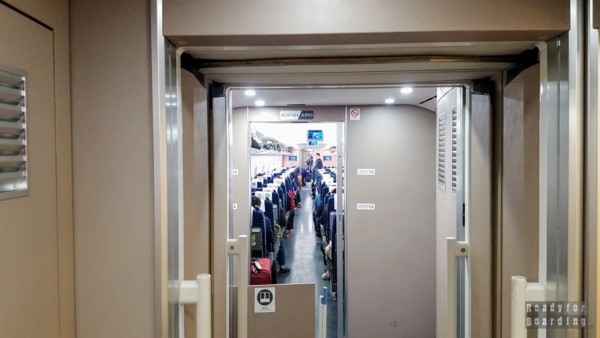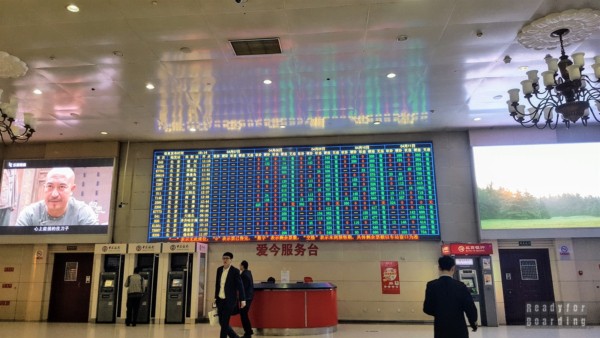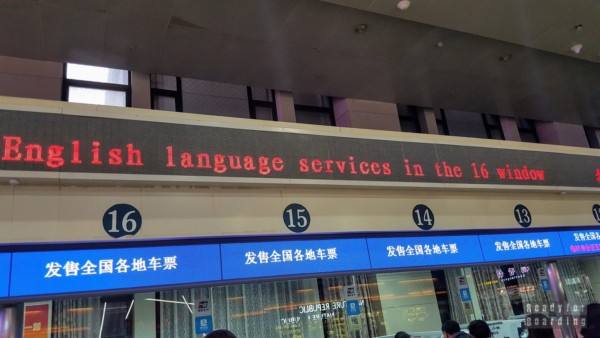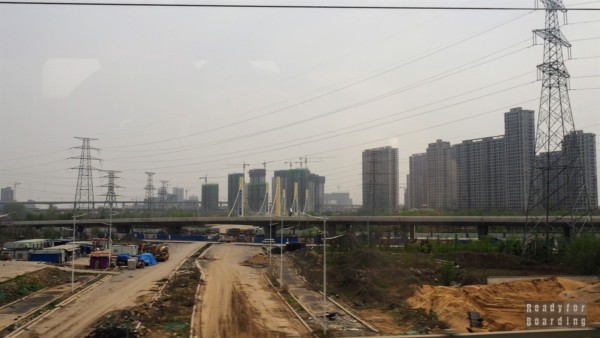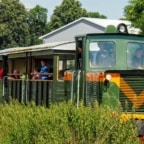Traveling by train in China is cool :) In this post, we will try to dispel some of your doubts about traveling by train in China and, in the process, give you some valuable tips.
Let’s start with the fact that China is not Japan. However. have you heard about the super fast and wonderful trains in Japan? About the shinkansen? Probably so. And about super fast trains in China? Probably a little less, although China’s high-speed railroad, called China Railway High-speed(CRH), is the largest such system in the world.
Currently, it has 22,000 km (!!!) of lines for high-speed trains, leaving far behind the aforementioned Japan (2,765 km). Interesting fact: the world’s second longest high-speed train line is… Spain, with 3,100 km of lines for high-speed rail. It’s impressive, isn’t it?
Table of contents
Types of trains in China
There are several types of trains in China. I think in terms of our tourist travel, we can distinguish three types: the aforementioned high-speed trains (CRH), slow trains (so-called conventional rail, in other words, “like our PKP” ;-)), and night trains (like on our trip to Xi’an).
High-speed trains in China are a very good alternative to air travel between Chinese cities. High standard, fast, clean, well equipped. Nevertheless, it is not a cheap event. What surprised us, however, was that even for the most expensive trains, tickets were selling like hotcakes. These trains are designated by the symbols C, D and G (e.g., G254).
Slow trains (otherwise ordinary, conventional trains ) are, of course, much cheaper, for the reason that they go… slower. The obvious ;) They are marked with the letters T, K, Y, S, Z, for example. Y221). Here the cleanliness and quality are definitely worse, but there is no tragedy. The question is already up to you whether you care about time or savings. If on savings then why not choose the third option….
Night trains are something that makes traveling very easy. You don’t lose a day of travel, and you save extra on accommodation. China has a well-developed network of night services between cities (high-speed trains do not run at night). Nothing but to use :) Night trains are usually marked with the letter Z, T or K.
What is the difference in price? A high-speed train on the Beijing-Xi’an line costs CNY 515 in the cheapest class. Slower, traditional trains cost as little as CNY 150. The night version costs the same, but prices with a couchette only start at 270 CNY. That is, depending on the option, we have a 3-fold breakthrough.
What is the difference in time? CRH covers this stretch in as much as 4.5 hours (depends on the train, how many stations it stops at along the way, the slowest of the fast ones take about 6 hours). Standard trains, of course, have worse results, from 11 to even 17 hours! Overnight, the most optimal option takes almost 12 hours, so not so bad. That is, here we also have a time breakthrough between fast and slow trains 3 times.
Which option to choose? We leave that up to you…
What are the types of classes/compartments?
To keep things simple, trains in China also have travel classes. And we are not talking about a division like in Poland (first and second class). There’s a little more…
1st Class – first class occurs on high-speed trains (C, D and G). As standard, the seats are wider and more comfortable than in second class. The seating arrangement in these carriages is 2-2 (two seats on each side of the aisle).
2nd Class – or so-called economy class – also comes only in the first carriages. Just like in an airplane and here you have less legroom and space on the sides. In this class, the seat configuration is 2-3. Nevertheless, we have a shelf in front of the seat in front of us. There is also luggage space above us and at the rear of the carriage (for larger suitcases).
Business Class and VIP Seat – this class is only found on some high-speed trains. The seating arrangement is usually 2-1, and the seats themselves recline.
Hard seat – This is where the compartment classes on traditional (free) trains already begin. This class is by far the cheapest and worst option. There is a lot of noise/crowd here. The seats are not very comfortable and cannot be tilted back. The seating arrangement is similarly to the 2nd class of high-speed trains 2-3. Except that here it is in truth less comfortable and less clean. For short trips it’s ok, but for an overnight trip to Xi’an or somewhere else, not so much anymore.
Soft seat – More comfortable seats than the previous class, in a 2-2 arrangement. It occurs only in a few trains.
Hard sleeper – The cheapest (and obviously least comfortable) option when it comes to couchettes. It occurs on night trains or those that run for a really long time. It is 6 seats lying in one compartment, most often without lockable doors, which also makes this class quite noisy and uncomfortable. For 99% if you fall into the lower couchette every now and then you will have someone squatting on it ;) Despite the squeeze, surprisingly there will also be room for larger luggage (although we don’t know how it is when all 6 people have large luggage ;)).
Soft sleeper – A better option of the above class. In the compartment we have 4 places to sleep. Importantly, this compartment already has a door, which provides far greater comfort and security. The beds are wider than those in the hard sleeper class, which also improves travel comfort.
Deluxe sleeper (or Luxury soft sleeper) – the richest option when it comes to overnight trains. It is a private compartment (for two people), with two beds, a large table, an armchair and…. its own private bathroom :) We allowed ourselves such a luxury to make the night journey with Olive more pleasant for us as well as for our fellow passengers :) Unsurprisingly, 99% of the seats in this class on our trains were occupied by…. white tourists ;)
Standing – There is also this option. Tickets without a seat guarantee are also sold on some trains. Just like in our good old PKP ;-)
It is worth mentioning that virtually every type of carriage/class has hot water at the end of the carriage (for tea and Chinese soups, which the Chinese eat without restraint).
How about the dirt and grime on the trains?
Before going to China, we heard what a mess it is on trains, the lack of culture, the problem of buying a ticket (about that in a moment), etc…. How is it for real?
Let’s start with the fact that we have two worlds. The first is high-speed trains (CRH). Here the level of railroads definitely overtakes our Polish PKP by many times. Clean, quiet, fast trains. During our trip (about 5h), a cleaner passed through the carriage many times, even with a mop washing the entire floor thoroughly. And no, we didn’t even ride in first class ;)
The moral of this may be that the culture of the Chinese people still leaves a lot to be desired, but the high-speed train service is doing its best and a trip on these trains leaves pleasant memories.
The other world is traditional trains. Here we already have quite a breakdown when it comes to cleanliness. In the more expensive grades, everything is fine, although perhaps not so perfect anymore. In the lower classes (hard seat and hard sleeper) cleanliness is not at the highest level, which is due at least to the number of people per square meter and the lack of visible cleaning crews :)
How to buy a train ticket in China?
Let’s move on to the most important: how to buy a train ticket in China? Is it easy? Is it possible to communicate?
The first thing we were warned about on this subject was the total lack of English language skills, the lack of service windows in English and the generally dramatic problems with buying tickets due to the lack of language skills (because train occupancy is another matter, tickets often run out days before departure).
Well… when we look at the departure board, do you understand anything from it? ;)
It’s less legible than it was during our trip in Japan, but with a little thought and knowledge of train numbering, it’s possible to make out something. Further down, on the platforms, the signs are also in English (though always keep an eye on the train number) so it’s impossible to get lost anymore.
At train stations (especially in Beijing), there are windows for service in English. And yes, it is possible to get along in English there. Also on the train we had a crew that understood something there and even spoke English. So such a complete tragedy is not.
So how do you buy a train ticket? As these most touristic destinations are very much under siege, we recommend you buy your tickets before you leave, online. There are many middlemen who offer their services, taking a small commission on each ticket. We just used this option.
Important! When buying a ticket online, you must give your full name and passport number, as you will later pick up your tickets at the station in your name and showing your passport.
Of course, you can also buy tickets on the spot, even more so if you don’t have 100% specific travel plans in China.
When to buy a ticket? You can buy tickets from an intermediary at any time before your trip, up to usually one business day before departure. However, typical sales begin 30 days before the day of departure, so you won’t buy tickets earlier at the station. Definitely do not leave the purchase of tickets to the last minute. There are many reasons: from queues at ticket offices starting, to lack of seats on trains….
Summary
Not everyone knows this, but China has a well-developed network of both traditional and high-speed railroads. We recommend you take a ride on both high-speed trains and regular trains, as it’s a prettyzłway to explore this interesting country.
The monumental train stations and the view of China under construction will leave you with amazing impressions of your China trip.
It’s also a good time to get to know the Chinese better, who are eager to chat up white tourists as they travel (as long as they speak English, of course :-)).
If you have any more questions about train travel in China, we encourage you to ask them in the comments. We will try to help :)







